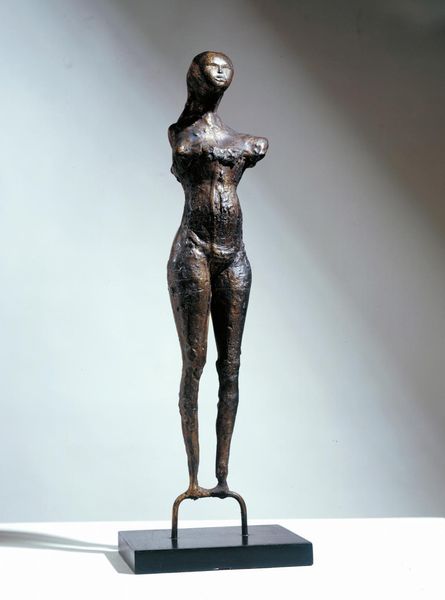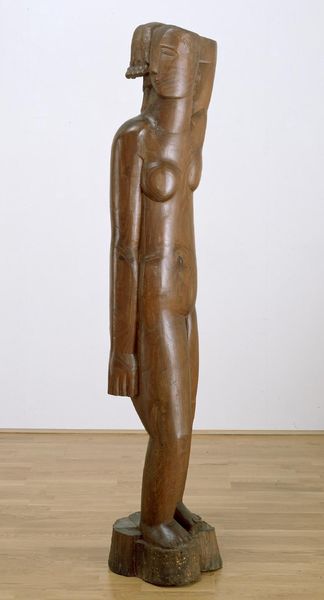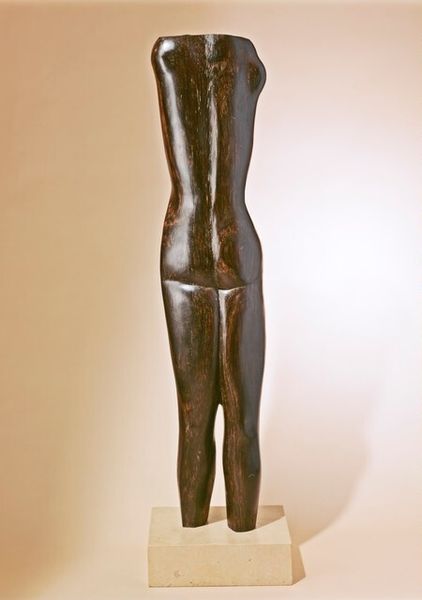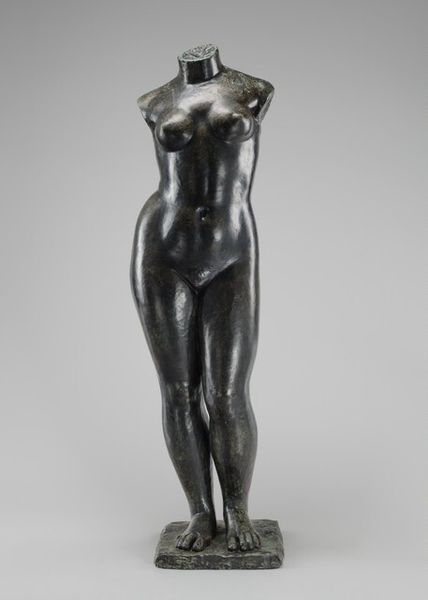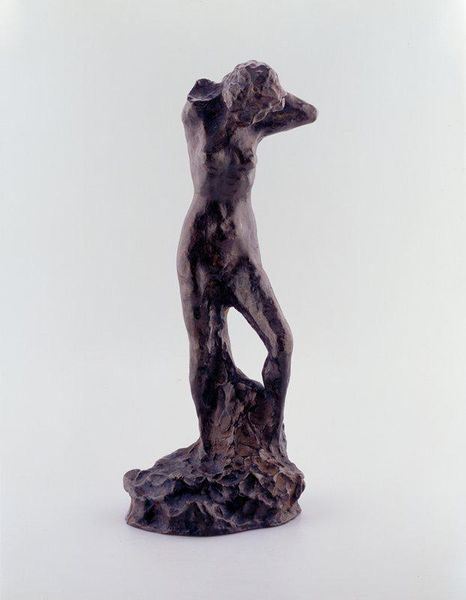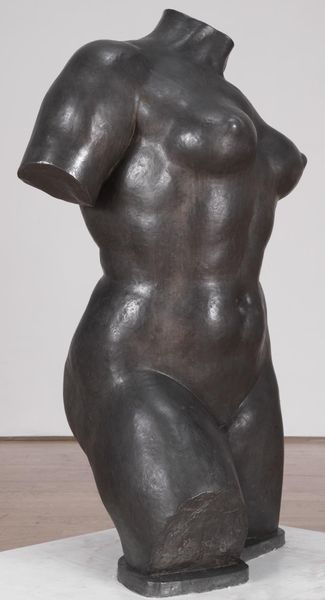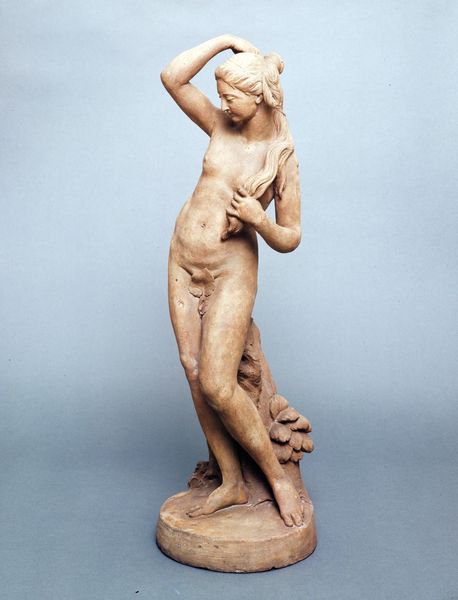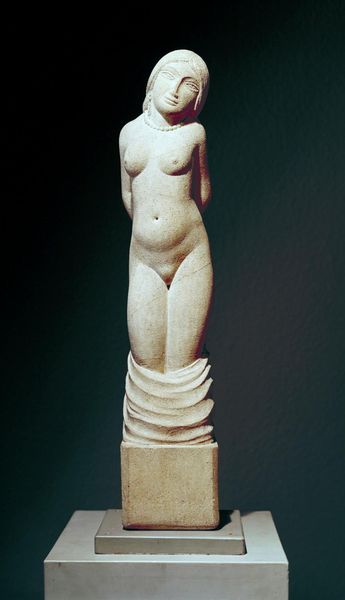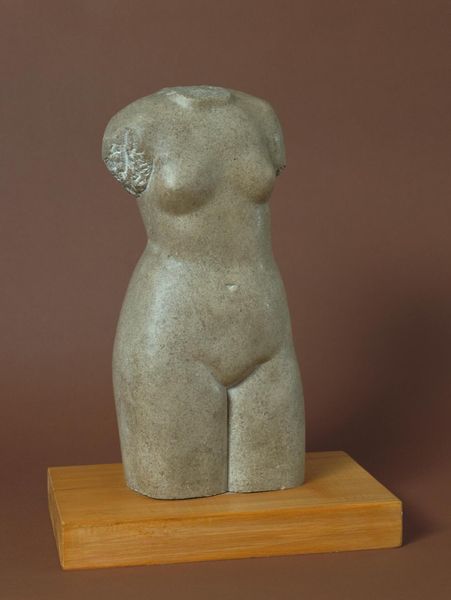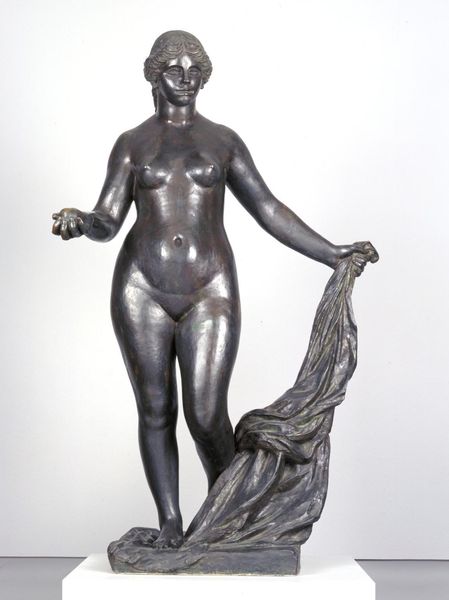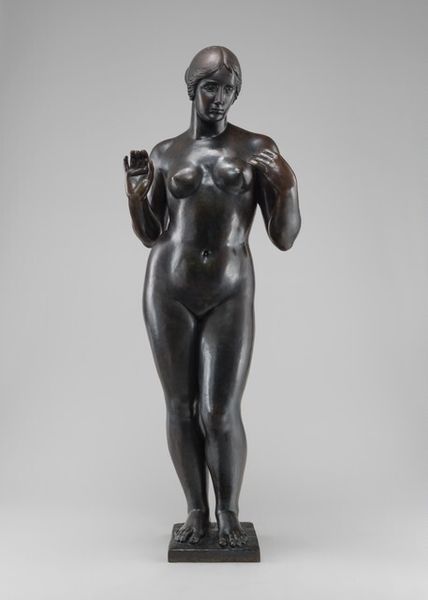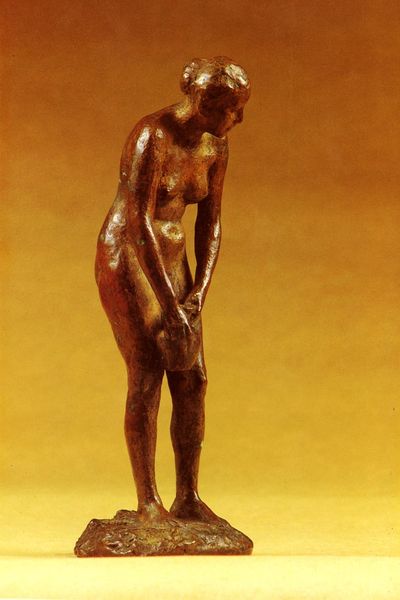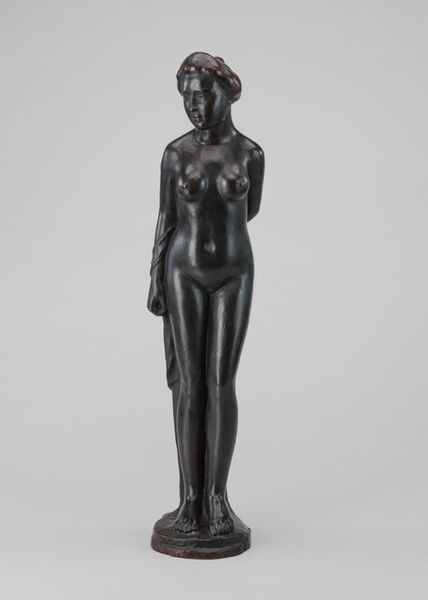
Dimensions: object: 642 x 146 x 122 mm
Copyright: © The estate of Jacques Lipchitz, courtesy, Marlborough Gallery, New York | CC-BY-NC-ND 4.0 DEED, Photo: Tate
Editor: This sculpture, "Pregnant Woman" by Jacques Lipchitz, held at the Tate, is captivating. The figure seems both vulnerable and powerful. What symbolic weight do you see in it? Curator: The image of the pregnant woman has held deep symbolic power across cultures. This sculpture, with its simplified forms, evokes ancient fertility figures. Do you see how Lipchitz merges vulnerability with a quiet strength? Editor: Yes, the crossed arms seem protective, but the gaze is steady. Curator: Exactly. Pregnancy symbolizes potential, new beginnings, and the cyclical nature of life. Lipchitz distills these ideas into a modern icon, continuing a cultural memory through form. Editor: That's fascinating. I hadn't considered how ancient symbols could be reinterpreted in modern art. Curator: Art often revisits and reshapes our shared visual vocabulary, prompting us to reconsider what these symbols mean to us today.
Comments
tate 6 months ago
⋮
http://www.tate.org.uk/art/artworks/lipchitz-pregnant-woman-t03482
Join the conversation
Join millions of artists and users on Artera today and experience the ultimate creative platform.
tate 6 months ago
⋮
Lipchitz received a thoroughly traditional training in sculpture. This involved copying plaster casts of classical sculpture, and learning how to develop an idea from small clay sketches to full-scale plaster models, which could then be copied in bronze or stone by craftsmen. The inspiration for this work lies less with traditional classical models, however, than with archaic sculptures of an earlier period, and, perhaps, medieval statuary. The woman's flattened features, the way in which her arms are pulled into the body, and the theme of pregnancy were all anti-classical, and reflected Lipchitz's awareness of the new interest amongst avant-garde artists in previously disregarded types of past sculpture. Gallery label, August 2004
